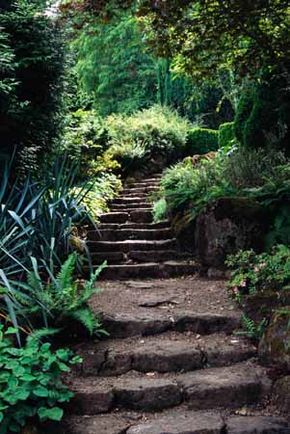Shrubs aren't just a way to block out the neighbors. They are a way to create attractive, organic designs for your landscaping.
While you may think of shrubs as "just green bushes," they are actually much more. Shrubs come in a variety of shapes and sizes, with many different types of foliage. Some shrubs produce berries, and others even provide fragrance! No matter what effect you are trying to achieve, there is undoubtedly a shrub that will fit the bill.
Advertisement
Creeping shrubs, like junipers, can serve as evergreen ground covers. Low, bushy shrubs like spirea and potentilla blend nicely into flower gardens or the front of a planting around the house. Larger, rounded shrubs can be grouped into clusters to define space or create privacy. More compact cultivars that mature when around 4 feet high, like Newport viburnum, can be used around a house without any pruning. Taller shrubs, like Allegheny viburnum, are best kept at some distance from the house where they won't block the views. They make good screens for the property perimeter.
Vertical shrubs that are shaped like an upright cone or pillar, such as Skyrocket juniper, create formality or emphasis in the yard. They can be striking when placed on either side of a doorway or garden gate.
Using a medley of shrub shapes creates design interest that goes much deeper than the leaves and flowers. And when you also take into account the other qualities shrubs have to offer, you'll see that they are an asset to any kind of garden.
- Plant fragrant flowered shrubs near doors or windows so you can enjoy their perfume both indoors and out.
- Cut flowering stems from your shrubs and bring them indoors to use in big bouquets. If you have large vases that dwarf ordinary annual or perennial stems, fill them with long branches of forsythia, lilac, or viburnum. What a wonderful way to celebrate spring!
- Plant shrubs that will flower in succession through the growing season. Get some spring, summer, and fall bloomers; then play them up, using other plants as supporting characters.
- Match the flower color of a viburnum with a cluster of daffodils. Echo the color of an azalea with a pot of pink pansies.
- Plant a coniferous shrub garden for winter fun. Use evergreens with a variety of different shapes and leaf colors: gold, blue, gray, and green. In northern climates where winter is long, this kind of planting brightens the garden.
Suitable shrubs include dwarf firs, pines, hemlocks, spruces, heathers, junipers, arborvitaes, and false cypresses. Specialty nurseries and catalogs abound with other, less common conifers as well. Inter-plant cone-shape and vertical evergreens with low and mounded forms. Add some spectacular weeping conifers for excitement, and contrast blue and gray foliage against green and gold. In summer, add some annuals, perennials, and ornamental grasses for variety.Shrubs in ContainersAny hardy shrub you find growing in a container at the garden center can continue life as a container plant on your terrace, deck, or doorstep. Use a larger container with additional potting soil of the type preferred by the plant. Set the plant and its container in the right amount of sun or shade. In cold climates, use frost-proof containers such as redwood or plastic. Avoid terra-cotta, which can crack if the soil freezes. Other factors to keep in mind are the size and density of the shrub and its appearance at different times of the year.Use these tips to manipulate your shrubbery into wonderfully ornate creations that your neighbors will envy at your next garden party.©Publications International, Ltd.
Advertisement
